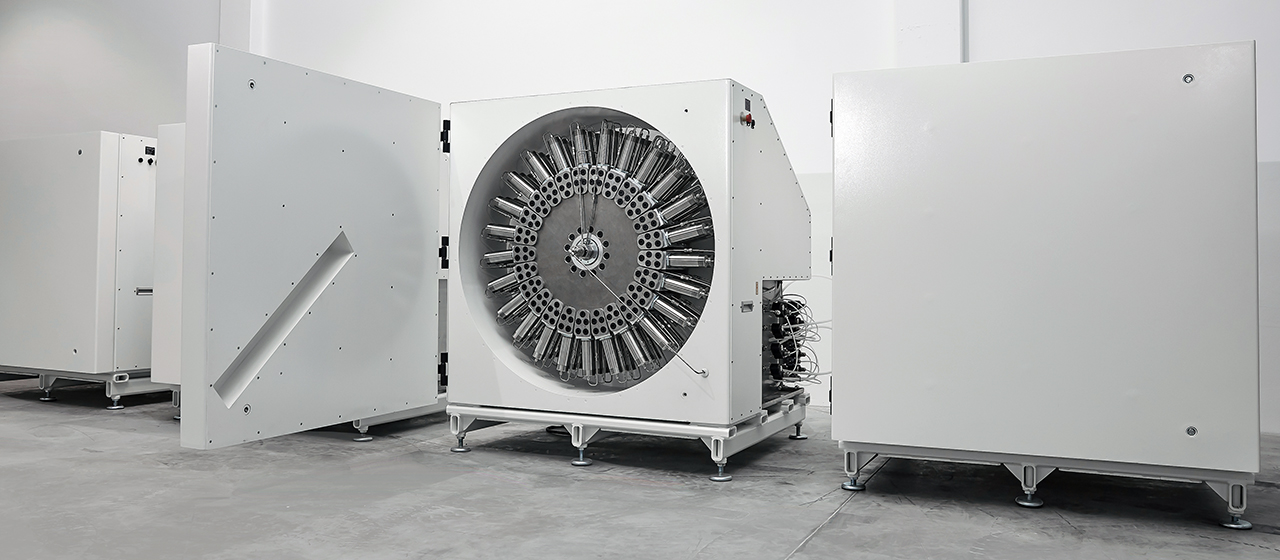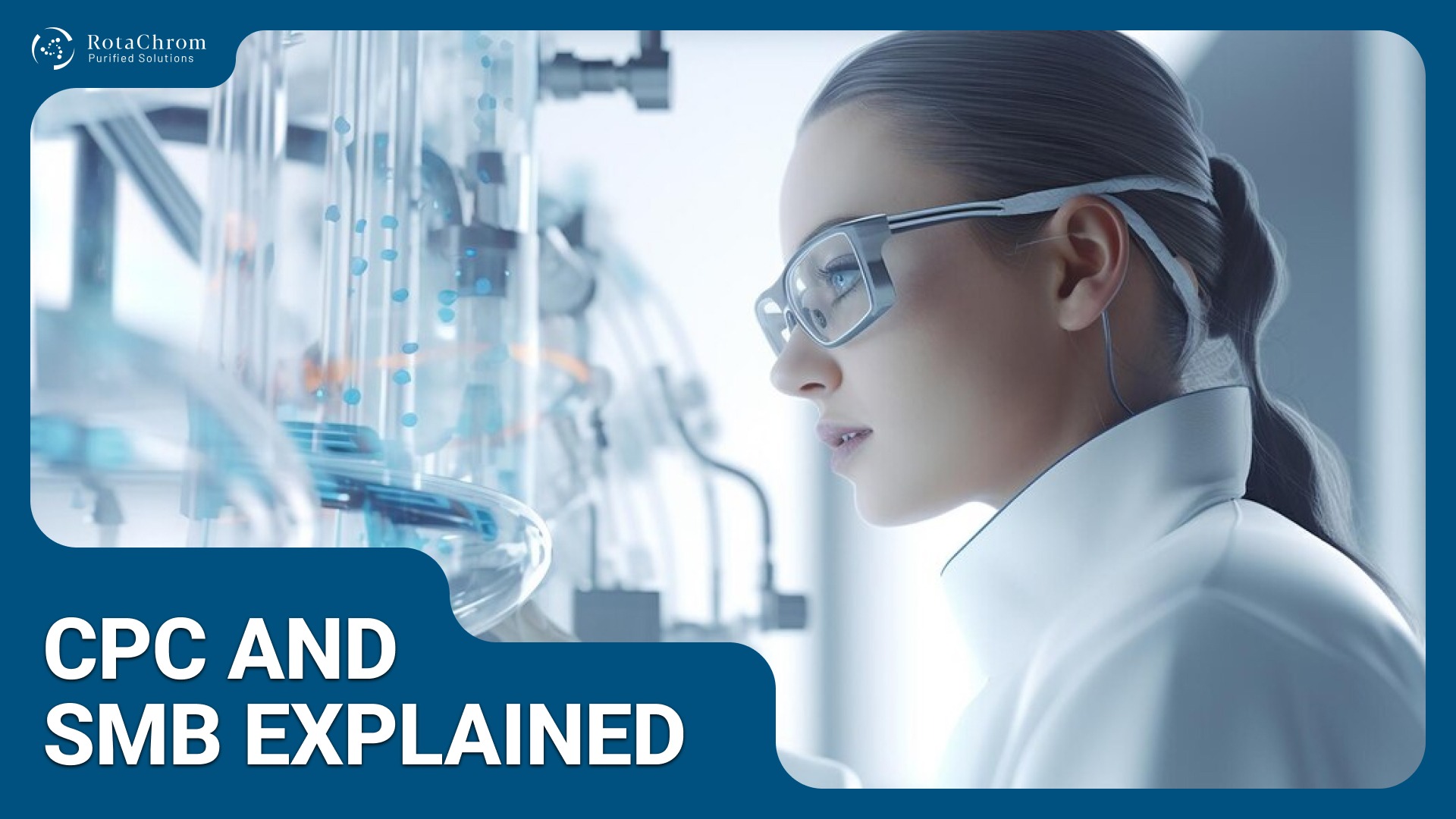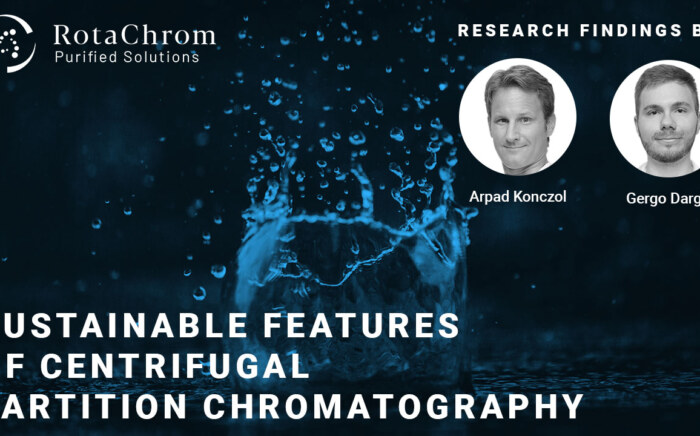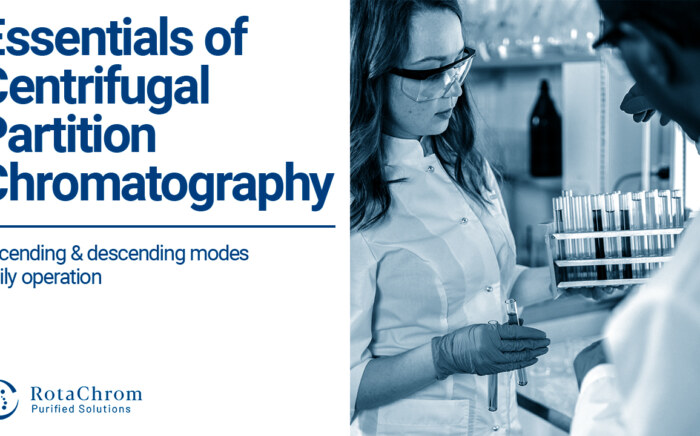Increasing separation efficiency by pH adjustment in Centrifugal Partition Chromatography
NewsContinuous manufacturing, also known as flow manufacturing, is a crucial approach in industrial production that involves the seamless and uninterrupted creation of products, eliminating stops or pauses between successive batches. Unlike batch manufacturing, which involves periodic processing, continuous manufacturing ensures the constant operation of machinery and equipment, minimizing process variations typically required to produce diverse product types.
Continuous chromatography exemplifies this approach, offering enhanced efficiency and heightened productivity. These systems streamline operations, reducing solvent consumption and optimizing column usage, leading to improved separation outcomes. Beyond these efficiency gains, continuous systems also provide greater flexibility, the potential for automated and unattended operation, and the assurance of consistent product quality.
While batch manufacturing is known for its simplicity and ease of operation, adopting continuous manufacturing can help overcome processing bottlenecks and achieve higher levels of product quality and quantity. For scientists and chemists, continuous manufacturing holds significant potential for refining the production of active pharmaceutical ingredients (APIs) using chromatography, enhancing efficiency, and streamlining pharmaceutical development processes.
Several continuous productions exist. Today, we will examine two of them: continuous centrifugal partition chromatography (CPC) and simulated moving bed (SMB).
Continuous and Batch Processing
In modern contexts, batch preparative chromatography is primarily used for producing relatively small quantities of compounds, typically up to tens of kilograms per day. In contrast, continuous processes can yield several tons per day, reflecting a significant scale-up in production capacity.
What is simulated moving bed?
Simulated moving bed (SMB) is a multi-column chromatographic method which allows mixtures of substances to be continuously separated and extracted. It offers significantly higher efficiency than batch processing through its use of the column stationary phase.
How does simulated moving bed work?
The simulated moving bed (SMB) process is a practical adaptation of the true moving bed (TMB) concept. Instead of using a single chromatographic column, SMB employs several smaller columns. To mimic the movement of the solid phase, the inlet and outlet streams are periodically shifted in line with the fluid flow direction. This method offers significant benefits, including a notable reduction in both mobile and stationary phase consumption, as well as a significant increase in overall productivity. Initially, SMB found applications in industries such as petrochemicals and sugar refining.
By continuously introducing the sample feed and synchronously switching the columns against the eluent flow, a countercurrent motion between the solid and liquid phases is created. This dynamic interaction achieves high-purity target fractions, demonstrating the efficiency of the SMB process.
To simulate the movement of the solid phase, seven multi-position valves, or alternatively, one central multi-position valve, are switched simultaneously. Most of the eluent remains in constant circulation, requiring only a small portion to be replaced, which is extracted as the extract and raffinate. This feature allows for eluent savings of up to 90% compared to traditional batch processes.
Moreover, due to the simulated countercurrent operation, the stationary phase utilization is significantly enhanced with the SMB technique compared to conventional batch processes. As a result, the importance of the number of theoretical plates is reduced, allowing the use of larger, more cost-effective particle sizes for the stationary phases, further optimizing the overall process economy.
Centrifugal Partition Chromatography

In centrifugal partition chromatography (CPC), batch separations can transition into semi-continuous purification using the multiple dual-mode (MDM) approach. This approach leverages the fluid nature of the stationary phase. By cyclically interchanging the roles of the stationary and mobile phases and reintroducing the sample solution, the stationary phase can be effectively regenerated. This innovative method enhances separation efficiency, offering a valuable technique for optimizing separation workflows.
The integration of these advanced chromatographic techniques propels the advancement of separation science. Scientists and chemists across various industries can utilize these methods to improve the efficiency, scalability, and sustainability of their processes, driving progress in fields such as pharmaceuticals, petrochemicals, and more.
Multiple Dual-Mode CPC
Multiple dual-mode centrifugal partition chromatography (MDM CPC) is a unique technique where the roles of the stationary and mobile phases switch multiple times during the process. This is feasible because both phases in chromatography are liquids.
In standard CPC, compounds can be separated in two different ways: ascending (normal-phase) and descending (reversed-phase) modes, all within a single process. By switching a valve in the CPC machine, the flow direction of the liquid phase is reversed, making the former input the new output and vice versa. This method, known as dual-mode, allows for the separation of molecules with very different characteristics from a complex starting material, such as a raw plant extract, quickly and without losing any sample material. Reversing the liquid phases just once illustrates how this method can extend into a repeating process, alternating between dual-mode steps, ensuring the collected product remains pure.
In an MDM CPC process, the feed mixture is loaded between the columns of a two-column setup. Multiple cycles, each containing two steps, are performed to collect less retained and highly retained components at opposite ends of the column. These steps correspond to the two elution modes within liquid-liquid chromatography: descending mode (Des) and ascending mode (As).
During the descending mode, the upper phase acts as the stationary phase while the lower phase functions as the mobile phase, pumped through the column. In the ascending mode, these roles are reversed, with the upper phase becoming the mobile phase and the lower phase becoming the stationary phase. This switch, along with changes in flow direction and elution order of the feed components, enables the effective separation of compounds with limited selectivity.
MDM CPC, whether paired with periodic reinjections or applied independently, stands out as an effective and versatile solution for complex separations involving structurally similar compounds. In specific cases, this strategy can even extend to facilitate a continuous sample feed, significantly increasing overall productivity. By enabling a continuous flow of samples, the separation process is maintained without interruption, contributing to enhanced throughput and efficiency. This dual-mode technique, whether used periodically or continuously, addresses the limitations of traditional methods and overcomes challenging separation obstacles.

Continuous CPC Solutions
Continuous CPC offers several benefits for the user, so it is worth investing in such a technology. RotaChrom offers its own GMP-compliant continuous CPC solution in the shape of the Continuous CPC platform.
The Continuous CPC platform epitomizes engineering excellence with its two interconnected GMP-rCPC devices: a preparative unit and a control unit. This system’s dual-mode, dual-rotor configuration is particularly noteworthy, allowing for continuous injection mode, which significantly enhances throughput and efficiency. By ensuring uninterrupted sample processing, this continuous processing approach meets the dynamic demands of modern industries, offering a streamlined and highly efficient solution for complex separations.
To learn more about the Continuous CPC platform, click here.



